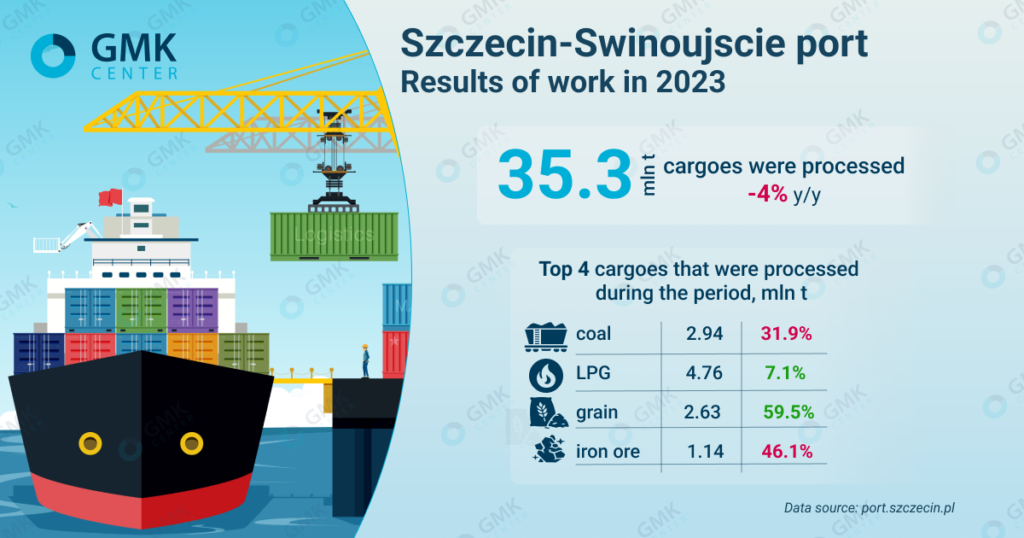
News Infrastructure sea ports 369 10 January 2024
In December, the port complex has reduced the processing of iron ore by 29%
In 2023, the Szczecin-Swinoujście port complex in Poland reduced iron ore transshipment by 46.1% compared to 2022, to 1.14 million tons. This is evidenced by the data on the company’s website.
In December 2023, the port handled 40.5 thousand tons of iron ore, which is 29% less than in December 2022.
In general, last year the port complex reduced cargo transshipment by 4% compared to 2022, to 35.32 million tons. In December, transshipment volumes decreased by 19.5% y/y – to 2.58 million tons.
Among the main cargoes handled by the port during the year:
- coal – 2.94 million tons (-31.9% y/y);
- grain – 2.63 million tons (+59.5% y/y);
- gas – 4.76 million tons (+7.1% y/y).
Container handling by the port for 2023 amounted to 67.59 thousand TEU (-10.3% y/y).

As GMK Center reported earlier, in 2022, Szczecin-Swinoujście increased iron ore transshipment by 11.4% year-on-year – up to 2.11 million tons. In December, iron ore handling decreased by 67.4% y/y – to 57.1 thousand tons. Overall, the port complex increased cargo handling by 10.8% y/y – up to 36.8 million tons.
At the end of May 2022, the Polish port of Świnoujście shipped the first batch of 30 thousand tons of Ukrainian iron ore. The raw materials were delivered to the port by rail and sent to the customer in Algeria. At that time, the port had more than 50 thousand tons of Ukrainian ore on its berths.
Since the beginning of the war, Ukrainian steelmakers have been exporting their products to Europe by rail. The blockade of the ports left the Ukrainian steel and mining industry with only this option, which is several times more expensive and takes much longer to deliver. With the opening of the sea corridor, part of the exports began to be shipped through Ukrainian seaports.



